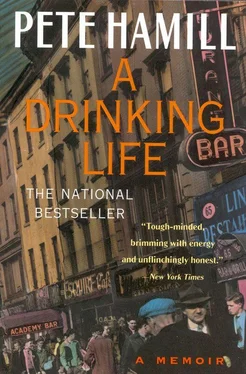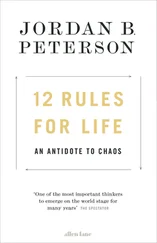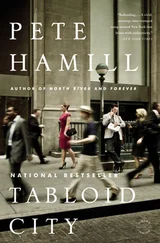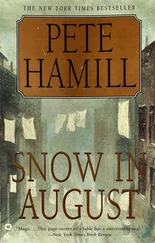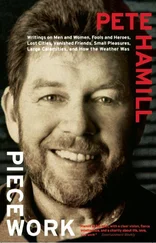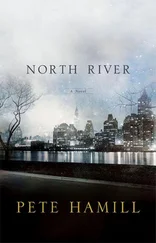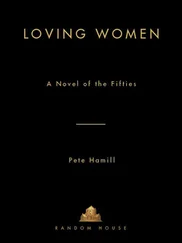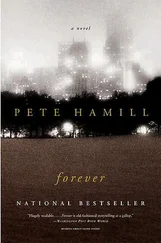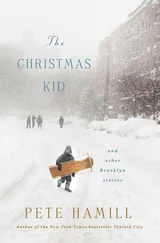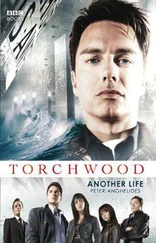Do they have roaches here? I said.
My mother laughed. I hope not, she said.
I don’t want to live here if they have roaches, I said.
Well, she said without much hope, let’s wait and see.
Then the truck arrived and my father eased out of the cab, smoking a cigarette, while the large men unloaded the furniture and started moving us into 378. Groups of nameless kids were gathering at the corners, watching us with a mixture of curiosity and hostility; some of them were my age, and all were wearing long pants while I still wore knickers and knee socks. Faces appeared at the windows of Rattigan’s. Someone wiped a peephole in the steam of the dry cleaner’s. Maybe they had come to see the cripple. Or maybe they had heard about the Irish drunk. Or a crippled Irish drunk. Or maybe they just wanted to look at the kid who still wore knickers.
When the truck arrived, my mother took us into the warmth of a candy store, two doors away, and I felt better. Nobody could watch us in here. The place was called Sanew’s (we pronounced it Sen-you). Immediately inside the door, atop a glass-topped counter, nickel candies were arrayed on a stepped rack, like a sugary stoop. Beside it, a small change dish, advertising Dentyne gum, sat on top of a pebbled rubber mat, with the cash register next to it. There were racks of cigarettes on the wall behind the counter, including my father’s beloved Camels. That was good. He could walk next door to get his cigarettes, even in the snow.
Most of the good things of Sanew’s were on the right as you walked in, including a soda fountain with four swivel-topped stools. Behind the marble counter, spouts poured soda, seltzer, a variety of syrups in endless combinations (egg creams and lime rickeys and cherry Cokes), and below the counter were silver-covered hidden places filled with tubs of ice cream. That first day, Mrs. Sanew mixed soda for us kids and made tea for my mother, looking distracted in a way that would soon become familiar to all of us. Mrs. Sanew had gray-streaked black hair pulled into a tight bun, thick eyeglasses wedged on a longish nose, a pinched sour mouth. She always wore thick-heeled sensible shoes and a wine-colored wool sweater that buttoned in the front. The sweater had two pockets, and sometimes, when distracted, she would jingle coins in those pockets, her eyes seeing something that was a long way from Brooklyn. Behind that counter, seven days a week, from seven in the morning until ten at night, Mrs. Sanew made egg creams, or filled dishes with ice cream, or prepared tea, or poured coffee. She sold cigarettes, cigars, candies, and newspapers; she rang up purchases on the cash register; she made change. There was simply no time for joy or laughter. There also might have been some darker cause for her permanent air of distraction, some fierce Catholic denial of self, some permanent act of mortification or penance. In all the years we lived there, I never saw her eat or drink even one of the treats she made for others; it was as if that would be some sign of weakness, some surrender to illicit pleasures or desires she held in contempt. That first day, as she served my mother, her face was locked into a sad or angry mask.
There was one other ornament of Sanew’s: a rack on the wall to the left of the door. The top row was filled with movie magazines or copies of Collier’s, Liberty, Life. The next was thick with pulps, with their garish, disturbing covers. But the two bottom racks were full of comic books. Comics with titles I didn’t know, covers I’d never seen, comics that could have been from another country. Blue Bolt. Sheena, Queen of the Jungle. The Spirit. They were completely different from the comics at Foppiano’s and I must have stared at them with something like passion and desire, because I remember my mother saying to me: “Well, you’ll be happy here.”
Then we walked back to 378, entering through the street door for the first time. There were brass mailboxes on the left of the vestibule, white octagonal tiles on the floor, then a second door, filled with a panel of frosted glass, leading into the hallway. For a moment, I was scared; the hallway space was high, narrow, murky; the dark air was stained by strange odors, as if something was rotting. On the left a passageway led into the back of the hall, where I could see three battered garbage cans. On the right were the narrow stairs, with strips of ridged metal tacked to the lip of each step, to protect the linoleum from the assault of thousands of footsteps. My mother lifted Kathleen from the baby carriage and parked it against the wall on the left and started leading us up the stairs, into a deeper darkness. The rough plaster walls were shiny with paint, dark brown from the floor to the height of my mother’s shoulder, then a paler ocher to the ceiling. I could smell meat cooking. I could hear radios: music on one floor, announcers talking on another. On the second landing, dogs barked from behind a door. On each landing there was a small bare yellowish light bulb, which heightened the feeling of deep rich earth-colored darkness.
We went up three flights, to the top floor right, where a door was open to the kitchen. This was where we were now going to live. I paused in the hall, unable to move. Maybe if I just stood there, they would change their minds and we would put everything in the truck and drive away, skipping 435 Thirteenth Street, going all the way back to Fourteenth Street. My father and some of the large men were standing there, drinking beer from quart bottles, laughing and smoking cigarettes, using saucers for ashtrays.
Don’t stand there like an idjit, my father said. Come in.
The large men laughed.
Come on, my father said. Give us a hand.
So I went in and the large men shook my hand and said to my father, We shoulda brung some soda for the kid, Bill.
And my father said, We’ll bring some back.
And one of the men said, Hell, he’s big enough for a beer, ain’t he, Bill?
My father smiled, and turned away, lifting silverware and glasses from a Campbell’s soup box, discarding the newspapers that wrapped them, then laying them in the sink. It was as if I’d disappeared.
For a long time, the large men shifted furniture, grunting, sweating, while my mother asked them to move a chair here, a couch there. I wandered through the rooms of the railroad flat. There was a small bedroom off the kitchen, then a larger bedroom, then the living room, with two windows looking down at Seventh Avenue. The new building was only one story higher than the flat on Fourteenth Street, but after two long years on the ground floor at Thirteenth Street, the height here amazed me. I could see the roofs of trolley cars, the tops of the black steel poles that supplied their power, the bobbing hats and shoulders of passing strangers. Unlike Fourteenth Street, there were no trees to break a fall, no branches or tree trunks to supply direction to the eye or the illusion of safety. If I fell from this window, I would die. It was like coming to the edge of the cliff I saw in the advertising on the back of the comics, all about the Rosicrucians, whatever they were, and the secrets of life.
To the right of the living room, facing the avenue, there was a small room with a window that led to the fire escape. We called this the Little Room and it was unique: it had a door. From the Little Room’s window, I could see across the avenue into the apartments of strangers, turrets and chimneys on the rooftops, and away off, the distant ridge of Prospect Park. I thought: This must be what it’s like to be a giant.
In a rush of excitement, I ran back into the kitchen. This wasn’t so bad, maybe. Up here in the top floor right, the world was bright again after the darkness of the hall. The kitchen windows looked down a long slope toward the harbor, and I could even see the concrete railway trestle where the subway went over the Gowanus Canal. That astonished me. I had been under that trestle many times, waiting for my mother when she brought my father his lunch; now, I was above the trestle, up here at the top of the long slope. From this back window, I could see the receding rectangles of a thousand rooftops and the skeletal shapes of ten thousand winter trees and the steeples of a hundred churches rising above the houses. There were ships moving in the distant harbor, sailing away to fight Hitler, and my mother came over and pointed out the Statue of Liberty, green and tiny, and the skyline of Manhattan, naming some of the buildings. But there was something missing.
Читать дальше
